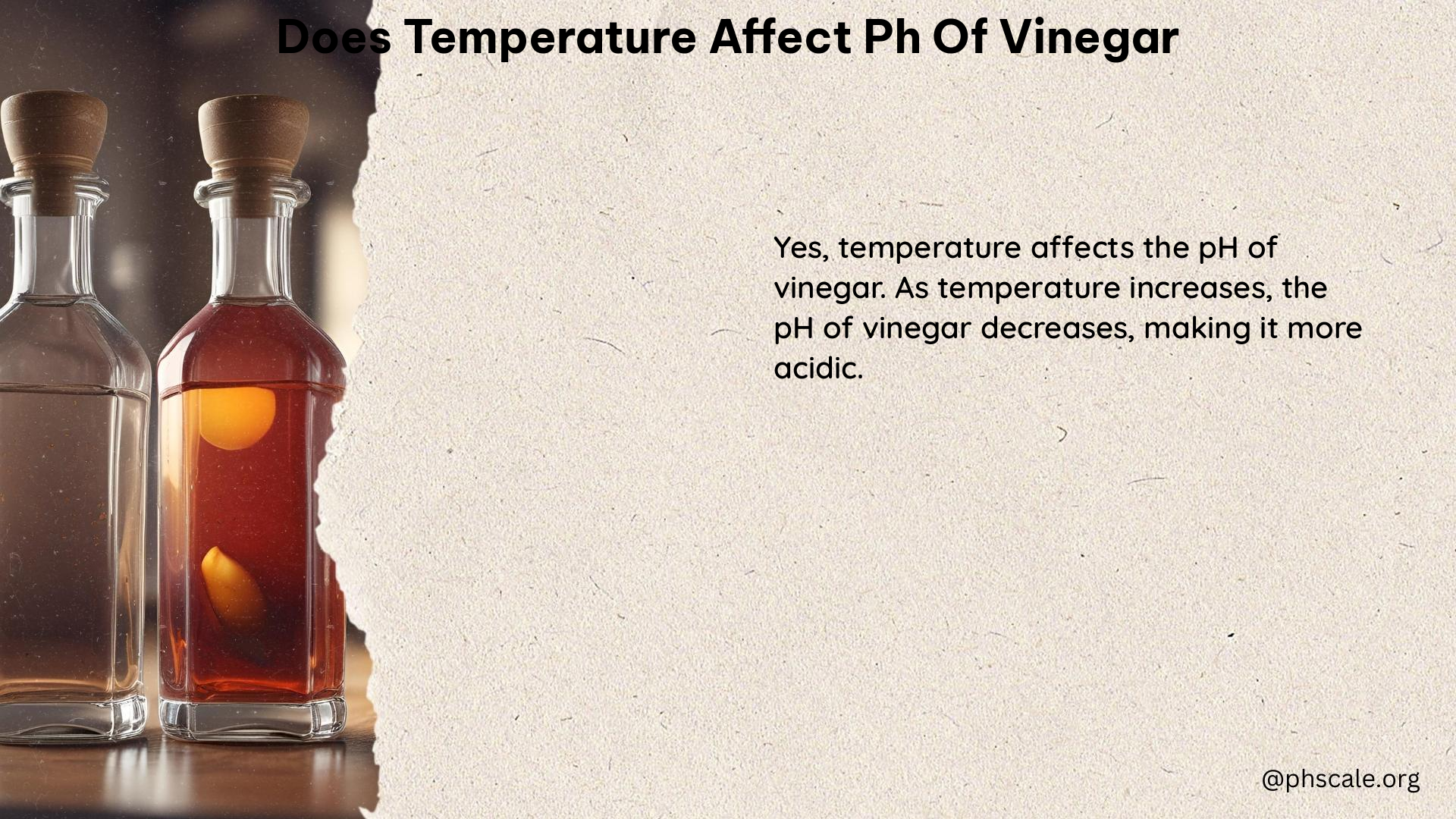Yes, temperature does affect the pH of vinegar. As the temperature increases, the pH level of vinegar decreases, meaning it becomes more acidic. This is because higher temperatures cause molecular vibrations to rise, which results in ionization and the formation of hydrogen ions (H+). The more hydrogen ions in a solution, the more acidic it becomes, and therefore the pH level decreases.
Understanding the Relationship between Temperature and pH
The pH of a solution is a measure of the concentration of hydrogen ions (H+) in the solution. The lower the pH, the more acidic the solution, and the higher the pH, the more basic the solution.
When the temperature of a solution increases, the kinetic energy of the molecules in the solution also increases. This increased kinetic energy leads to more collisions between the molecules, which can result in the dissociation of water molecules and the formation of more hydrogen ions (H+).
The relationship between temperature and pH can be expressed using the following equation:
pH = -log[H+]
Where [H+] represents the concentration of hydrogen ions in the solution.
As the temperature increases, the concentration of hydrogen ions [H+] increases, which in turn decreases the pH of the solution, making it more acidic.
Factors Affecting the pH of Vinegar

Vinegar is an acidic solution that is primarily composed of acetic acid (CH3COOH) and water. The pH of vinegar can be affected by several factors, including:
- Concentration of acetic acid: The higher the concentration of acetic acid in the vinegar, the lower the pH and the more acidic the solution.
- Temperature: As mentioned earlier, the temperature of the vinegar can affect its pH. As the temperature increases, the pH of the vinegar decreases, making it more acidic.
- Impurities: The presence of impurities in the vinegar can also affect its pH. For example, the addition of other acids or bases can change the overall pH of the solution.
Measuring the pH of Vinegar
To measure the pH of vinegar, you can use a pH meter or pH test strips. When measuring the pH of vinegar, it’s important to also measure the temperature of the solution, as pH can vary with temperature.
Many pH meters have an Automatic Temperature Compensator (ATC) sensor built-in, which helps to account for the effects of temperature on pH readings. This ensures that the pH measurement is accurate and reliable.
If you’re using pH test strips, it’s important to follow the instructions carefully and compare the color of the test strip to the provided color chart to determine the pH of the vinegar.
The Importance of Measuring pH in Vinegar
Measuring the pH of vinegar is important for several reasons:
- Quality control: Monitoring the pH of vinegar can help ensure that the product meets the desired specifications and is consistent with the manufacturer’s standards.
- Food safety: The pH of vinegar is an important factor in food safety, as it can affect the growth of harmful bacteria and the shelf life of food products.
- Culinary applications: The pH of vinegar can affect the flavor and texture of food, so it’s important to understand how temperature can impact the acidity of vinegar when using it in cooking and baking.
Conclusion
In conclusion, temperature does affect the pH of vinegar, causing it to become more acidic as the temperature increases. Understanding this relationship is important for accurately measuring and using vinegar in various applications, from food preparation to quality control. By properly accounting for temperature when measuring the pH of vinegar, you can ensure accurate and reliable results.
References:
1. Nail IB. Effect of cooking temperature on acetic acid content of vinegar.
2. Healthline. pH of Vinegar: Acidity and Strength.
3. Atlas Scientific. Does Temperature Affect pH?
